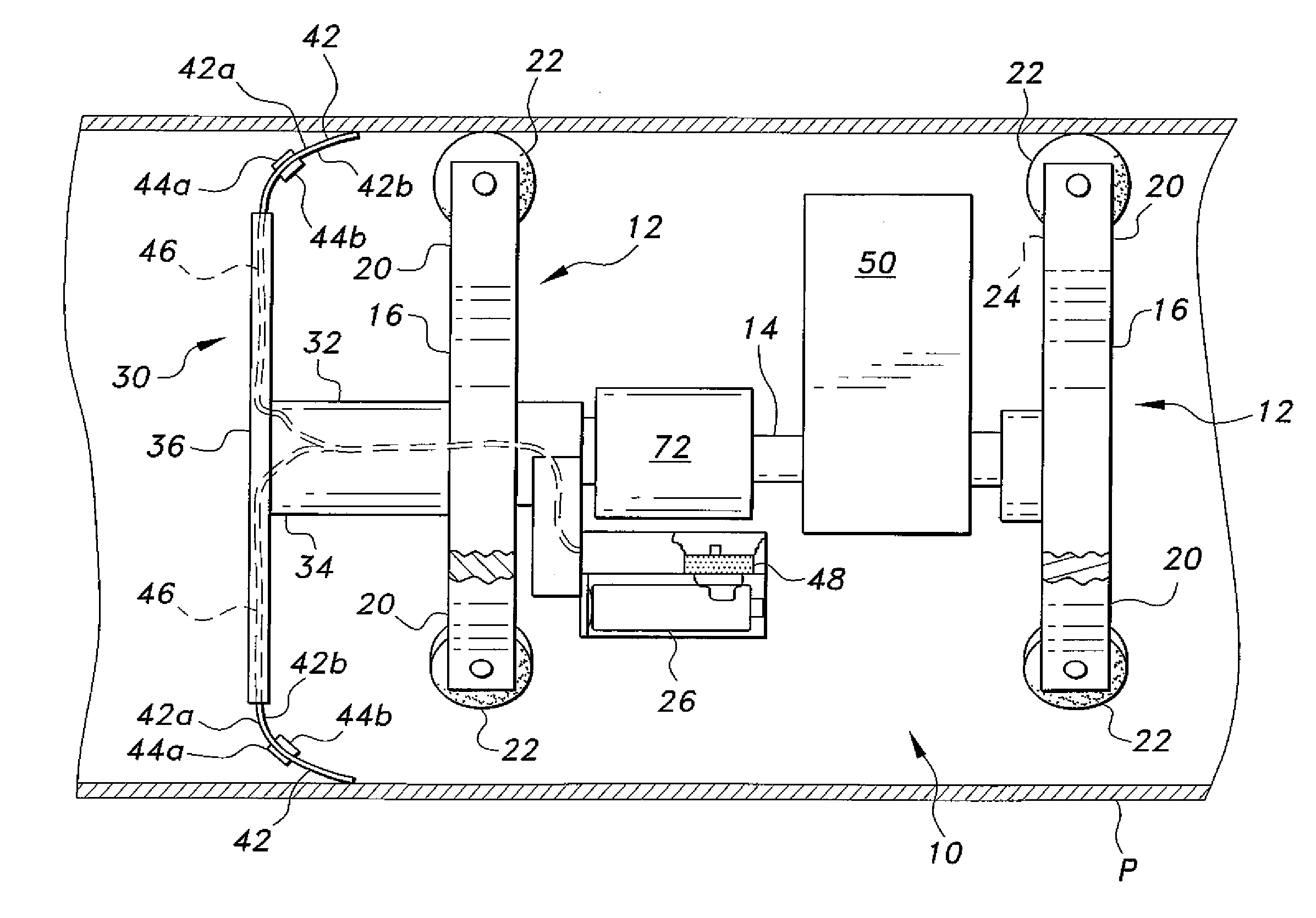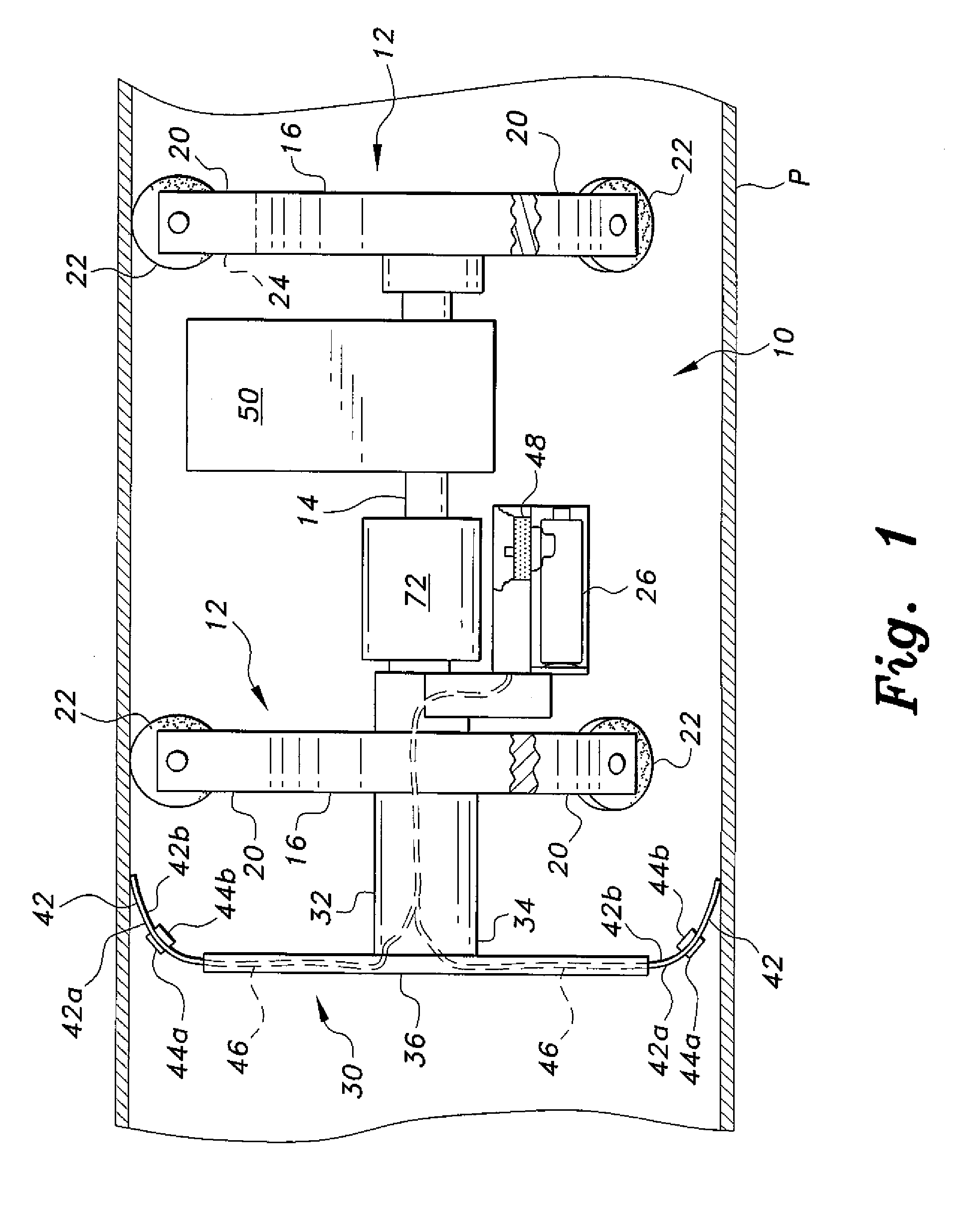Pipeline leak detection and repair device
a technology of leak detection and repair device, which is applied in the direction of pipes/joints/fittings, mechanical equipment, pipes, etc., can solve the problems of pipeline fluid leakage, e.g., gas, oil and water, and is a chronic problem, and achieves the effect of reducing the risk of pipeline leakag
- Summary
- Abstract
- Description
- Claims
- Application Information
AI Technical Summary
Benefits of technology
Problems solved by technology
Method used
Image
Examples
Embodiment Construction
[0019]The pipeline leak detection and repair device is a completely autonomous machine that is capable of traveling through a gas, oil, water, or other pipeline to detect small leaks therein. Moreover, the device automatically seals those leaks nearly simultaneously as it passes them. The only delay is the very short time span between the detection of the leak at the front of the device and the sealing of the leak by the mechanism toward the rearward portion of the device as the device travels through the pipeline.
[0020]FIG. 1 of the drawings provides a schematic side elevation view of the pipeline leak detection and repair device 10, shown traveling through a pipeline P. The device 10 comprises substantially identical front and rear supports 12 joined by an axial connecting column 14. The only difference between the two supports is their relative locations and the installation of a drive motor to drive at least one of the wheels on one of the supports, as discussed further below.
[0...
PUM
 Login to View More
Login to View More Abstract
Description
Claims
Application Information
 Login to View More
Login to View More - R&D
- Intellectual Property
- Life Sciences
- Materials
- Tech Scout
- Unparalleled Data Quality
- Higher Quality Content
- 60% Fewer Hallucinations
Browse by: Latest US Patents, China's latest patents, Technical Efficacy Thesaurus, Application Domain, Technology Topic, Popular Technical Reports.
© 2025 PatSnap. All rights reserved.Legal|Privacy policy|Modern Slavery Act Transparency Statement|Sitemap|About US| Contact US: help@patsnap.com



